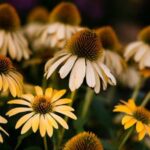Landscape painting ideas are a beloved subject in the art world, capturing the beauty and majesty of nature on canvas. From serene mountainscapes to vibrant seascapes, landscape painting has captivated artists and art enthusiasts for centuries. In this section, we will explore the allure of landscape painting, its historical significance, and why it continues to inspire artists today.
The appeal of landscape painting lies in its ability to evoke emotions and memories, transporting viewers to different places and times through the artist’s interpretation of nature. Throughout history, landscape art has played a crucial role in depicting cultural, social, and environmental changes, reflecting the connection between humanity and the natural world.
Many renowned artists have left a lasting impact with their breathtaking landscapes, from the romantic depictions of Caspar David Friedrich to the vibrant impressions of Claude Monet. As we delve into this section, we will uncover the rich legacy of landscape painting and its enduring relevance in contemporary art. Whether you’re an aspiring painter or an admirer of art, there is much to discover about the enchanting world of landscape painting.
Finding Inspiration
Landscape painting ideas can come from a variety of sources, and it’s essential for artists to find inspiration that resonates with them. One of the best ways to find inspiration for landscape painting is by immersing oneself in nature.
Spending time outdoors, whether it be in a local park or on a hiking trip, allows artists to observe different landscapes and connect with the natural world. Additionally, traveling to new places can provide fresh perspectives and new scenery for landscape painting ideas.
Personal experiences and memories can also serve as powerful sources of inspiration for landscape painting. Artists can draw from their own emotional connections to certain places or moments in nature, infusing their paintings with personal meaning and sentiment. Whether it’s a childhood memory of a favorite vacation spot or the feeling of calmness when gazing at a sunset, these personal inspirations can translate into compelling landscape paintings.
Another way to find inspiration for landscape painting is through the work of other artists. Exploring the diverse styles and techniques used by renowned landscape painters can broaden an artist’s creative horizons and provide new ideas for their own artwork. Studying famous landscape paintings can be both educational and inspirational, offering insight into different approaches to capturing the beauty of nature on canvas.
| Finding Inspiration Sources | Examples |
|---|---|
| Nature | Local park, hiking trails, travel destinations |
| Personal Experiences | Memorable locations, emotional connections |
| Inspirational Artwork | Famous landscape paintings, renowned artists’ styles |
Choosing the Right Materials
When it comes to landscape painting ideas, choosing the right materials is essential to creating a beautiful and long-lasting piece of art. Here are some tips for selecting the best materials for your landscape painting:
- Quality Brushes: Invest in high-quality brushes that are specifically designed for oil or acrylic paints. The right brushes will help you capture fine details and create various textures in your landscape painting.
- Paint Selection: Choose artist-grade paints in a variety of colors to accurately represent the natural hues found in landscapes. Consider purchasing a range of earthy tones, greens, blues, and yellows to bring your landscape to life.
- Canvas: Select a sturdy canvas that can withstand the application of paint and any necessary adjustments during the artistic process. A primed canvas will ensure that your paint adheres properly and lasts for years to come.
In addition, consider investing in palette knives, sponges, and other tools that can help create unique textures and effects within your landscape painting. Experiment with different mediums, such as watercolors or pastels, to add depth and interest to your artwork.
Ultimately, the right materials will provide a strong foundation for expressing your landscape painting ideas and bringing your creative vision to life on canvas. By choosing quality materials tailored to your preferred style and technique, you can elevate the impact and longevity of your landscape paintings.
Techniques for Capturing Landscapes
When it comes to landscape painting, there are a variety of techniques that artists can use to capture the essence of nature on canvas. Experimenting with different styles and methods can help artists find their unique voice and express their vision of the natural world. Some popular techniques for capturing landscapes include:
- Impressionism: This style focuses on capturing the overall impression of a scene rather than details. Artists use short, thick brushstrokes to convey movement and light.
- Realism: Realistic landscape painting aims to depict nature as accurately as possible, paying close attention to detail, color, and form.
- Abstract: Abstract landscape painting allows for a more interpretive and creative approach, using color, shape, and texture to evoke the feeling of a landscape rather than portraying it realistically.
Regardless of the technique chosen, there are key elements that should be considered when capturing landscapes in paintings. Light, texture, and perspective are essential components in creating depth and atmosphere in landscape art. Understanding how these elements work together can help artists convey the mood and emotion of a particular scene.
In order to develop their own unique style for capturing landscapes in paintings, artists should experiment with different techniques and learn from other painters who specialize in this genre. By studying famous landscape paintings and exploring various approaches to depicting nature, artists can further develop their landscape painting ideas and hone their skills in this timeless art form.
Popular Landscape Painting Ideas
When it comes to finding inspiration for landscape painting ideas, the possibilities are endless. From serene mountainscapes to dramatic seascapes, nature offers an abundance of subjects to explore. One popular theme for landscape painting is capturing the changing seasons and weather conditions. Whether it’s a vibrant autumn forest or a snowy winter scene, each season offers unique colors and textures to incorporate into your paintings.
Another popular idea for landscape painting is focusing on specific natural elements, such as mountains, forests, or bodies of water. These timeless subjects have been a source of inspiration for artists throughout history and continue to captivate painters today. Mountains, in particular, offer a sense of grandeur and majesty, while forests evoke feelings of tranquility and mystery. Meanwhile, seascapes provide a dynamic and ever-changing subject with the ebb and flow of tides.
In addition to traditional landscapes, urban landscapes have also become popular subjects for contemporary artists. Skyscrapers, city streets, and industrial structures offer a different perspective on the relationship between nature and human development. The juxtaposition of natural elements with man-made structures can create compelling compositions that add depth and complexity to landscape paintings. Whichever landscape painting ideas you choose to pursue, remember that experimentation and exploration are key to developing your unique artistic style.
| Landscape Painting Ideas | Related Keywords |
|---|---|
| Changing seasons | landscape painting ideas |
| Natural elements (mountains, forests) | landscape art inspiration |
| Urban landscapes | cityscape paintings |
Step-by-Step Landscape Painting Tutorial
Creating a beautiful landscape painting can be an incredibly rewarding experience, allowing artists to capture the beauty of nature on canvas. In this step-by-step tutorial, we will guide you through the process of creating your own stunning landscape painting. From selecting the right materials to adding depth and atmosphere to your artwork, these tips will help you bring your landscape painting ideas to life.
Sketching Your Composition
Before you begin painting, it’s important to sketch out your composition. Take some time to consider the elements you want to include in your landscape, such as mountains, trees, or bodies of water. Use light pencil strokes to outline the basic shapes and layout of your scene. This initial sketch will serve as a roadmap for your painting and help you establish a strong composition.
Blocking in Colors and Shapes
Once you have your sketch in place, it’s time to start blocking in colors and shapes. Begin by applying broad strokes of paint to establish the overall color palette of your landscape. Focus on capturing the essence of the scene rather than getting caught up in small details at this stage. Use larger brushes to build up areas of color and shape, creating a foundation for your painting.
Adding Details and Depth
With the basic shapes and colors in place, you can start adding finer details to your landscape painting. Pay attention to light and shadow, using different brushstrokes and techniques to create depth and texture in your artwork. Consider how natural elements like foliage or water reflect light, adding vibrancy and dimension to your painting. Finally, adjust any final details or highlights as needed until you are satisfied with the overall look of your landscape.
By following these steps and using some creativity with our recommended landscape painting ideas, you can create a beautiful landscape painting that captures the beauty and tranquility of nature. So grab your brushes and let yourself be inspired by the world around you as you embark on this artistic journey.
Famous Landscape Paintings
Renowned Landscape Artists
Throughout the history of art, there have been numerous renowned artists who have mastered the art of landscape painting. One of the most famous landscape painters is J.M.W.
Turner, known for his stunning seascapes and romantic landscapes that capture the beauty and power of nature. Another iconic figure in landscape painting is Claude Monet, a leading figure in the Impressionist movement whose work exemplifies the use of color and light to depict landscapes in a new and innovative way.
Other notable landscape artists include Thomas Cole, an American painter known for his romantic depictions of the American wilderness, as well as John Constable, whose English countryside scenes are celebrated for their naturalistic detail and atmosphere. Each of these artists has left a lasting legacy in the world of landscape painting, inspiring countless artists to explore their own unique landscape painting ideas and techniques.
Significant Landscape Paintings
One of the most famous landscape paintings in art history is “The Starry Night” by Vincent van Gogh. This iconic work captures the artist’s emotional response to nature while staying at a mental asylum, showcasing a swirling night sky over a tranquil village. Another significant piece is “The Hay Wain” by John Constable, which is an excellent example of Constable’s ability to capture the changing moods of nature through his meticulous attention to detail.
Additionally, “The Oxbow” by Thomas Cole stands out as a powerful representation of America’s untamed wilderness during the 19th century. These famous works not only showcase the diversity within landscape painting but also serve as timeless sources of inspiration for aspiring landscape painters looking for new ideas and styles to explore.
Influences on Modern Art
The influence of famous landscape paintings can be seen across various genres and movements in modern art. From Abstract Expressionism to Contemporary Realism, contemporary artists continue to draw inspiration from classic landscape works while pushing the boundaries with innovative techniques and styles. Furthermore, with advancements in technology and globalization, modern artists have expanded their horizons beyond traditional landscapes, incorporating urban environments, industrial scenes, and even imaginary worlds into their repertoire.
By examining famous landscape paintings and understanding their impact on art history, aspiring painters can gain valuable insights into different approaches to capturing nature’s beauty on canvas. Whether aiming to emulate classical techniques or break new ground with experimental concepts, studying renowned examples provides a wealth of inspiration for creating compelling landscape painting ideas that resonate with contemporary audiences.
Resources for Landscape Painters
Aspiring landscape painters often find that they need more than just inspiration and talent to hone their craft. They also require access to the right resources, whether it be for learning new techniques, finding inspiration, or connecting with a community of fellow artists. Fortunately, there are numerous resources available to help landscape painters refine their skills and creativity.
One valuable resource for landscape painters is the plethora of books and websites dedicated to the art form. These resources can provide tutorials on specific techniques, insights into famous landscape paintings, and guidance on how to develop a personal style. By studying the work of established landscape artists and learning from their expertise, aspiring painters can expand their knowledge and vision.
Online communities also offer an invaluable source of support and feedback for landscape painters. Platforms such as social media, forums, and online art groups allow artists to connect with one another, share their work, and exchange ideas. Engaging with a community of peers can provide encouragement, constructive criticism, and opportunities for collaboration with other like-minded individuals who are equally passionate about creating landscape art.
Additionally, workshops, classes, and exhibitions offer opportunities for landscape painters to immerse themselves in the craft. Local art organizations often host painting classes or workshops that focus specifically on landscapes.
Attending these events can provide valuable hands-on experience working with different materials and techniques under the guidance of experienced instructors. Furthermore, visiting art galleries and museums to view landscape paintings in person can be an enriching way to draw inspiration from the work of established artists while gaining a deeper understanding of the power of landscapes in art history.
By taking advantage of these varied resources for landscape painters, aspiring artists can enhance their skills, broaden their artistic horizons, and become part of a vibrant community dedicated to the beauty of nature through painting. Whether seeking inspiration or further education in technique or style incorporation in landscape painting ideas – these resources serve as essential tools for those looking to embark on or continue their journey as a landscape painter.
Conclusion
In conclusion, landscape painting offers a timeless and captivating form of artistic expression. Throughout history, artists have been drawn to the beauty of nature and have captured it in their paintings, leaving behind a rich legacy of landscape art. Finding inspiration for landscape painting can be as simple as stepping outside and taking in the natural world or drawing from personal experiences and travels. The key is to connect with nature and let it guide your creativity.
When embarking on your own landscape painting journey, it’s crucial to choose the right materials. Investing in quality brushes, paints, and canvases will ensure that your artwork stands the test of time. Additionally, exploring different techniques such as impressionism, realism, and abstract can help you capture the essence of landscapes in unique ways. Paying attention to light, texture, and perspective will bring depth and life to your paintings.
Popular landscape painting ideas range from serene mountainscapes to lush forests and dramatic seascapes. Each season and weather condition presents its own set of challenges and opportunities for capturing the beauty of nature on canvas.
Taking inspiration from renowned landscape painters and their famous works can also provide valuable insight into different styles and techniques. As you continue your journey as a landscape painter, don’t hesitate to explore workshops, classes, books, websites, and online communities that cater specifically to landscape painting ideas for further guidance and inspiration.
Frequently Asked Questions
What Are 3 Styles of Landscape Painting?
Three styles of landscape painting include realism, impressionism, and abstract. Realism aims to depict landscapes with meticulous detail and accuracy. Impressionism focuses on capturing the fleeting effects of light and atmosphere in the outdoors. Abstract landscape painting involves non-representational forms and shapes to evoke a sense of nature without literal representation.
How Should a Beginner Paint Landscape?
For a beginner looking to paint landscapes, it’s important to start by observing real landscapes and understanding the basic elements such as trees, mountains, water, and sky. It’s also helpful to practice sketching these elements to get a sense of composition. Experimenting with different brushstrokes and techniques can also help beginners develop their own style.
What Colours to Use for a Landscape Painting?
The colors used for a landscape painting will depend on the time of day and the mood you want to convey. Typically, earthy tones like greens, browns, and blues are common for portraying nature in landscapes.
If aiming for a serene scene, softer pastel colors may be used, whereas bold and vibrant colors can be employed for more dynamic or dramatic landscapes. Ultimately, color choice depends on personal preference and the emotional impact the artist wants to achieve in their painting.

Welcome to my gardening blog! I am passionate about plants and enjoy sharing my knowledge and experiences with others. In this blog, I will write about everything related to gardening, from tips on how to get started to updates on my own garden projects.





